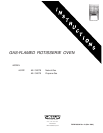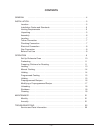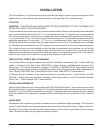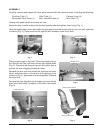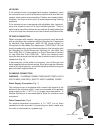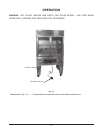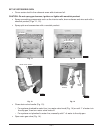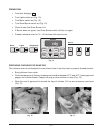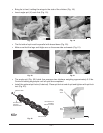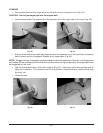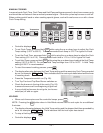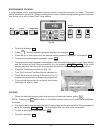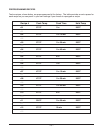
– 5 –
INSTALLATION
Prior to installation, verify that the electrical service and gas supply (natural or propane) agree with the
specifications on the machine data plate located on the right side of the rotisserie oven.
LOCATION
WARNING: THE ROTISSERIE OVEN SHOULD NOT BE ACCESSIBLE TO THE CUSTOMER; HOT
GLASS AND PARTS CAN CAUSE BURNS.
The equipment area must be kept free and clear of combustibles. Maintain clearances from combustible
and noncombustible construction of 3" (
7.6 cm) at the sides and rear. If rotisserie oven is equipped with
the optional glass back, clearance from combustible and noncombustible construction must be 3"
(
7.6 cm) at side and 15" (38.1 cm) from the rear of the rotisserie oven. The installation location must allow
adequate clearances for servicing: 18" (
46 cm) is recommended when used with leveling feet.
Adequate clearances must also allow for proper operation of the doors. The rotisserie oven is suitable
for installation on combustible floors. The rotisserie oven must be level for the rotor to operate properly.
The rotisserie oven must be installed so that the flow of combustion and ventilation air will not be
obstructed. The bottom of the rotisserie oven must be kept clear so that the air openings into the
combustion chamber are not obstructed. Make sure there is an adequate supply of air in the room to
allow for that required for combustion of gas at the rotisserie oven burners.
INSTALLATION CODES AND STANDARDS
In the United States, the gas rotisserie oven must be installed in accordance with: 1) State and local
codes; 2) National Fuel Gas Code, ANSI-Z223.1 (latest edition), available from American Gas
Association, 1515 Wilson Boulevard, Arlington, VA 22209; 3) ANSI/NFPA 96,
Vapor Removal from
Cooking Equipment
(latest edition), available from National Fire Protection Association, Batterymarch
Park, Quincy, MA 02269; and 4) National Electrical Code, ANSI/NFPA-70 (latest edition).
In Canada, the gas rotisserie oven must be installed in accordance with: 1) Local codes; 2) CAN/
CSA149.1,
Natural Gas and Propane Installation Code
(latest edition); and 3) Canadian Electrical
Code, Part 1, CSA Standard C22.1 (latest edition).
VENTING REQUIREMENTS
Refer to
Vapor Removal from Cooking Equipment
, NFPA 96 (latest edition). The rotisserie oven cannot
be directly vented to a gas flue or exhaust. It should be operated under an exhaust hood that extends
at least 6" (
15.2 cm) beyond the rotisserie oven's sides. Clearance above the rotisserie oven flue should
allow the products of combustion to escape without interfering with heat circulation in the rotisserie
oven.
UNPACKING
Immediately after unpacking, check the rotisserie oven for possible shipping damage. If the rotisserie
is found to be damaged, save the packaging material and contact the carrier within 15 days of delivery.
Remove all vinyl paper from the stainless steel surfaces on the interior and exterior of the rotisserie
oven. Remove all tape from the glass and metal surfaces.



